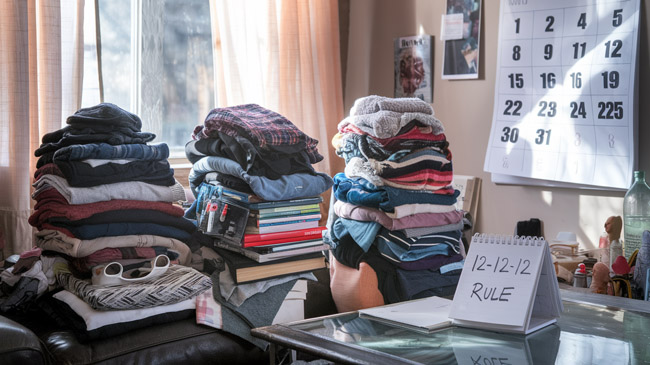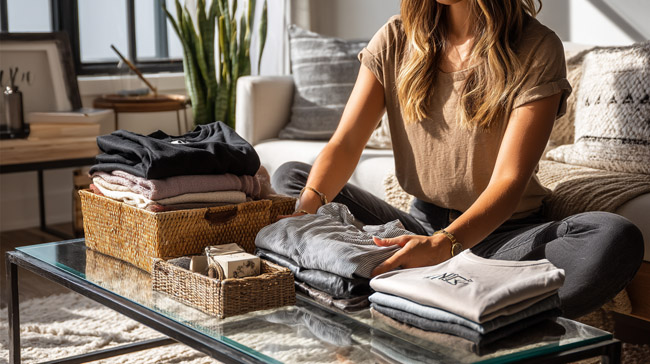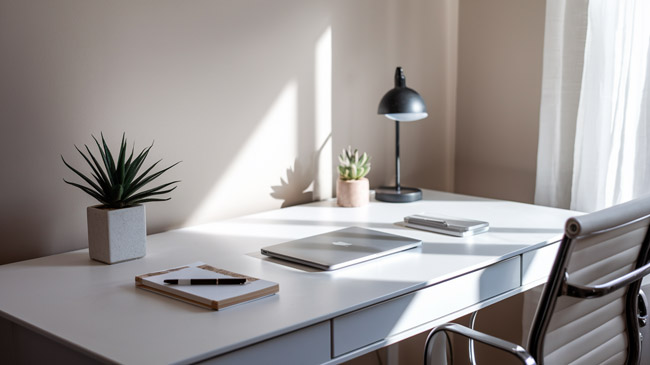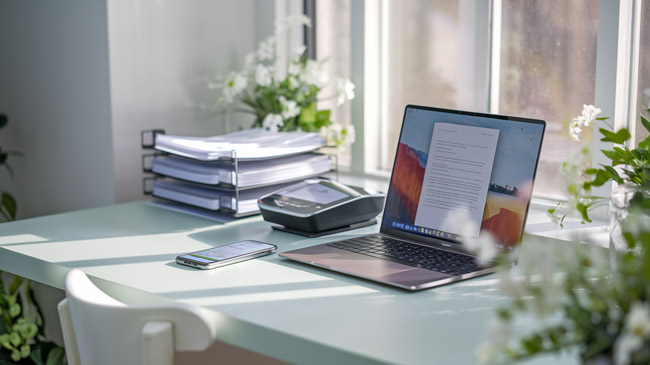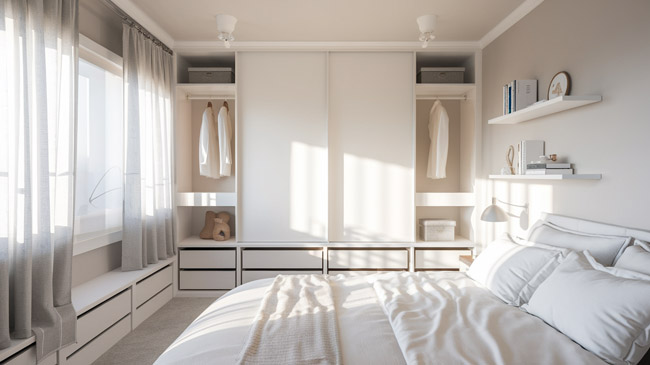(Please note: As an Amazon Associate, I earn commission from qualifying purchases in any of the links Below)
Easter is just around the corner, and it’s time to give your home a fresh, modern twist on traditional decorations. Are you tired of the same old pastel eggs and fluffy bunnies? Looking for ways to celebrate the season with style and sophistication? Look no further with our 10 Modern Easter Decor Ideas!
Discover the world of contemporary Easter decor that combines tradition with trendsetting designs. From minimalist egg displays to tech-integrated accents, we’ve curated a list of 10 Modern Easter Decor Ideas that will transform your space into a chic spring haven. Whether you’re hosting a grand Easter brunch or simply want to refresh your home for the season, these innovative ideas will inspire you to think outside the Easter basket.
Get ready to explore a palette of pastel twists, sustainable options, and globally-inspired accents that will breathe new life into your Easter celebrations. Let’s dive into these exciting Modern Easter Decor Ideas that blend the warmth of tradition with the coolness of modern design!
Minimalist Easter Egg Displays
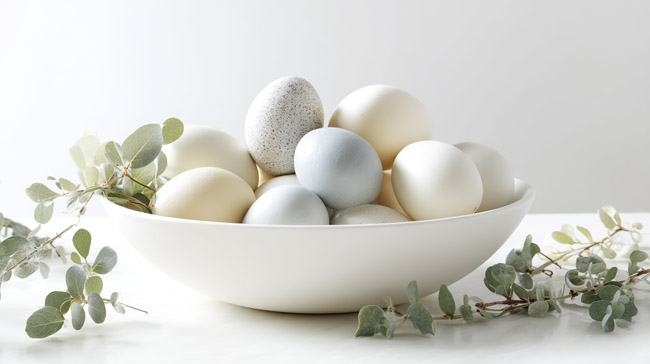
Monochromatic egg arrangements
Embrace simplicity with monochromatic egg displays that exude elegance and sophistication. Choose a single color palette, such as various shades of white, cream, or even muted pastels, to create a cohesive and visually striking arrangement. Place eggs of different sizes and textures in a minimalist bowl or on a sleek tray for a modern touch.
Key elements for a stunning monochromatic display:
- Use a mix of matte and glossy finishes
- Incorporate subtle patterns or textures
- Vary egg sizes for visual interest
Geometric egg holders
Add a contemporary twist to your Easter decor with geometric egg holders. These modern structures provide a unique way to showcase your eggs while doubling as sculptural art pieces. Opt for materials like metal, wood, or acrylic to complement your existing decor style.
Popular geometric egg holder designs:
- Triangular prisms
- Hexagonal frames
- Circular wire stands
- Cube-shaped holders
Floating egg installations
Create an eye-catching focal point with a floating egg installation. This avant-garde approach to Easter decor brings a sense of whimsy and modernity to your space. Suspend eggs at varying heights using clear fishing line or thin ribbons, arranging them in a cascading pattern or a structured grid formation.
Now that we’ve explored minimalist Easter egg displays, let’s move on to nature-inspired Easter centerpieces that bring the outdoors in.
Monochromatic Egg Arrangements
-
Set of 12 White Ceramic Decorative Eggs
Perfect for creating a sleek, uniform look in your displays. -
Matte Pastel Decorative Egg Set
Adds subtle color variations while maintaining a minimalist aesthetic.
Nature-Inspired Easter Centerpieces
Moss and succulent nests
Create enchanting Easter centerpieces by combining the delicate beauty of moss with the unique charm of succulents. These miniature gardens offer a fresh, organic twist on traditional Easter decor. To craft your own:
- Choose a shallow bowl or dish
- Line it with a layer of moss
- Arrange small succulents within the moss
- Nestle colorful eggs or egg-shaped stones among the plants
The contrast between the lush green moss, the varied textures of succulents, and the smooth eggs creates a visually striking display.
Floral egg wreaths
Transform ordinary egg wreaths into stunning natural centerpieces. Use a mix of fresh or high-quality faux flowers to encircle a wreath form, then add pastel-colored eggs for a touch of Easter magic. Consider:
- Incorporating local, seasonal blooms
- Using a variety of flower sizes and shapes
- Adding greenery for depth and texture
Place these wreaths flat on tables or suspend them above for an eye-catching focal point.
Terrarium-style egg displays
Bring the outdoors in with miniature terrariums featuring eggs as the star attraction. Use clear glass containers to showcase layers of pebbles, soil, and moss. Carefully place eggs within this natural setting, surrounded by small plants or figurines. This approach allows for endless creativity and personalization.
Branches with hanging eggs
Embrace the simplicity of nature by using branches as a base for your Easter centerpiece. Select interesting, sculptural branches and arrange them in a tall vase. Decorate the branches with:
- Painted or dyed eggs hung from ribbons
- Delicate paper flowers
- Tiny bird’s nests
This vertical display adds height and drama to your Easter table, while maintaining a natural, organic feel.
Contemporary Easter Wreath Ideas
Metal hoop wreaths
Metal hoop wreaths offer a sleek and modern twist on traditional Easter decor. These minimalist designs provide a perfect canvas for showcasing spring blooms and Easter-themed elements. Consider using:
- Gold or copper hoops for a touch of elegance
- Matte black finishes for a contemporary edge
- Multiple hoops of varying sizes for a layered effect
Adorn your metal hoop wreath with:
- Faux or dried flowers
- Pastel-colored ribbons
- Miniature Easter eggs
- Delicate greenery
Asymmetrical designs
Break away from conventional circular wreaths with asymmetrical designs that add visual interest to your Easter decor. These unique arrangements can be:
- Off-center compositions
- Crescent-shaped displays
- Cascading floral arrangements
Mix textures and materials to create depth and dimension in your asymmetrical wreath. Incorporate elements like:
- Feathers
- Twine
- Moss
- Wooden cutouts
Unconventional materials
Push the boundaries of wreath design by incorporating unexpected materials. This approach adds a contemporary flair to your Easter decor while showcasing your creativity. Experiment with:
- Woven fabric strips
- Colorful yarn or thread
- Repurposed plastic materials
- Natural elements like driftwood or branches
Create a focal point by adding a modern Easter motif, such as a geometric bunny silhouette or abstract egg shapes. These unconventional wreaths serve as conversation starters and unique pieces of Easter-themed art for your home.
Pastel Color Palettes with a Twist
Muted pastels for sophistication
Gone are the days of saccharine-sweet Easter decor. This year, embrace a more refined approach with muted pastels. These subdued hues offer a sophisticated twist on traditional Easter colors, creating a calm and elegant atmosphere. Consider incorporating:
- Sage green
- Dusty rose
- Pale lavender
- Soft blue-gray
These muted tones work beautifully in various decor elements, from tablecloths and napkins to decorative eggs and floral arrangements.
Ombre egg decorations
Take your Easter egg game to the next level with stunning ombre effects. This gradient technique adds depth and visual interest to your decorations. To create ombre eggs:
- Start with a light base color
- Gradually add darker shades of the same hue
- Blend the colors for a seamless transition
Try this technique with different pastel colors for a cohesive yet varied display. Arrange your ombre eggs in clear glass vases or on tiered cake stands for maximum impact.
Metallic accents
To truly elevate your pastel Easter decor, introduce metallic accents. These shimmering elements add a touch of luxury and create a beautiful contrast against the soft pastel backdrop. Consider incorporating:
- Gold-rimmed plates and glassware
- Silver or rose gold egg holders
- Metallic ribbon for wrapping gifts or tying napkins
- Copper wire baskets for displaying eggs or flowers
By combining muted pastels with strategic metallic touches, you’ll create a modern and sophisticated Easter aesthetic that’s sure to impress your guests.
Modern Easter Tree Concepts
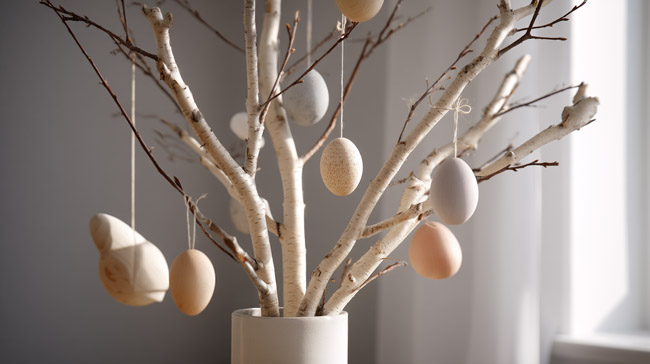
Minimalist twig trees
Embrace the elegance of simplicity with minimalist twig trees, a fresh take on traditional Easter decor. These understated yet striking arrangements bring a touch of nature indoors while maintaining a clean, modern aesthetic. To create your own:
- Choose slender, bare branches from trees like birch or willow
- Arrange them in a tall, clear vase or a sleek metallic container
- Add a few carefully selected ornaments, such as:
- Delicate pastel-colored eggs
- Small origami birds
- Tiny fairy lights
LED light-up egg trees
Illuminate your Easter celebration with enchanting LED light-up egg trees. These contemporary decorations blend technology with tradition, creating a mesmerizing focal point for any room. Key features include:
- Artificial tree structures with branches designed to hold eggs
- LED lights integrated into translucent or hollow plastic eggs
- Color-changing options for a dynamic display
Scandinavian-inspired designs
Channel the effortless chic of Nordic design with Scandinavian-inspired Easter trees. These designs emphasize clean lines, natural materials, and a muted color palette. Incorporate elements such as:
- Birch or white-painted wooden tree structures
- Felt or wooden egg ornaments in soft, earthy tones
- Simple geometric shapes like stars or hearts as additional decorations
Now that we’ve explored modern Easter tree concepts, let’s move on to sustainable Easter decor options that complement these contemporary designs.
Sustainable Easter Decor
Eco-friendly egg alternatives
When it comes to sustainable Easter decor, eco-friendly egg alternatives are a great place to start. Consider these options:
- Wooden eggs: Durable and reusable year after year
- Felted wool eggs: Soft, colorful, and biodegradable
- Paper mache eggs: Crafted from recycled materials
- Clay eggs: Can be made at home and painted as desired
Upcycled container ideas
Give new life to everyday items by repurposing them as Easter containers:
- Mason jars: Perfect for holding flowers or candy
- Tin cans: Paint them pastel colors for a chic look
- Old teacups: Ideal for small flower arrangements
- Wooden crates: Use as rustic Easter baskets
Natural dye techniques
Embrace the beauty of nature with these eco-friendly egg dyeing methods:
- Onion skins for rich browns and oranges
- Beets for vibrant pinks and reds
- Turmeric for sunny yellows
- Spinach or parsley for various shades of green
Reusable fabric decorations
Incorporate fabric elements into your Easter decor for a sustainable and cozy touch:
- Fabric bunnies: Sew cute, stuffed rabbits from old clothes
- Burlap banners: Create festive messages with natural fibers
- Fabric egg cozies: Knit or crochet cute covers for eggs
- Quilted table runners: Repurpose fabric scraps for a unique table setting
By incorporating these sustainable Easter decor ideas, you’ll create a beautiful and environmentally friendly celebration. Next, we’ll explore how to add a modern twist to your Easter decor with typography-based decorations.
Typography-Based Easter Decorations
Modern calligraphy signs
Transform your Easter decor with elegant modern calligraphy signs. These eye-catching pieces blend traditional Easter sentiments with contemporary design, creating a sophisticated and personalized touch to your holiday decorations. Use sleek, minimalist frames or rustic wooden boards as your canvas, and experiment with different calligraphy styles to match your home’s aesthetic.
Word art eggs
Take Easter egg decorating to the next level with word art eggs. This creative approach combines the timeless tradition of egg decorating with modern typography trends. Here are some ideas to get you started:
- Use letter stickers or stencils to spell out Easter-themed words on painted eggs
- Write inspirational quotes or personal messages using fine-tipped markers
- Create a word collage effect by layering different fonts and sizes on a single egg
Typographic Easter banners
Add a festive flair to your walls or mantel with typographic Easter banners. These versatile decorations can be customized to suit any style, from sleek and modern to playful and whimsical. Consider using laser-cut wooden letters, fabric appliqués, or even 3D-printed elements to create a unique banner that celebrates the spirit of Easter through words and typography.
By incorporating these typography-based Easter decorations, you’ll create a modern and personalized holiday ambiance that’s sure to impress your guests. Next, we’ll explore how geometric Easter baskets can add a contemporary twist to this classic holiday tradition.
Geometric Easter Baskets
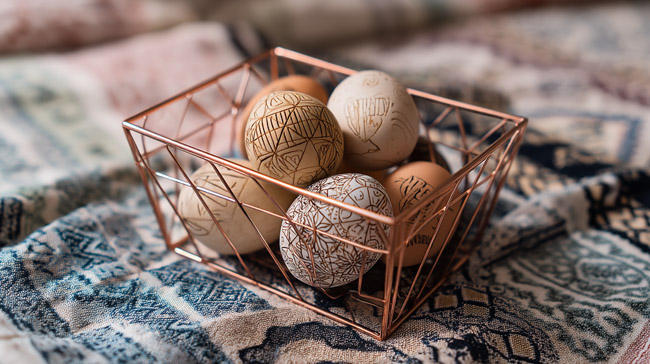
Wire frame baskets
Wire frame baskets offer a sleek and modern twist on traditional Easter baskets. These lightweight, minimalist containers provide an airy and elegant look while still serving the practical purpose of holding Easter treats. Here are some creative ideas for incorporating wire frame baskets into your Easter decor:
- Use different geometric shapes: Choose from spheres, cubes, or pyramids for a unique look
- Mix metallic finishes: Combine gold, silver, and rose gold wire baskets for visual interest
- Layer with fabric: Line the baskets with pastel-colored fabric for a softer touch
- Hang them as decorations: Suspend wire baskets from the ceiling or on walls as Easter-themed art
Origami-inspired containers
Bring a touch of Japanese art to your Easter celebration with origami-inspired baskets. These intricate, folded designs add a contemporary flair to your decor while showcasing your creativity. Consider these options:
- Fold colorful paper into geometric shapes like hexagons or octagons
- Create modular origami baskets using multiple sheets of paper
- Incorporate metallic or patterned paper for added visual appeal
- Use waterproof origami paper for outdoor Easter egg hunts
Lucite or acrylic baskets
For a truly modern Easter aesthetic, opt for lucite or acrylic baskets. These transparent containers create a futuristic look while allowing the colorful contents to shine through. Explore these ideas:
- Choose baskets with clean, angular lines for a contemporary feel
- Fill clear baskets with colorful Easter grass and eggs for a vibrant display
- Stack acrylic baskets of varying sizes to create a tiered centerpiece
- Customize clear baskets with modern decals or stickers for a personalized touch
Now that we’ve explored geometric Easter baskets, let’s move on to how technology can be integrated into your Easter decor for a truly cutting-edge celebration.
Tech-Integrated Easter Decor
Smart LED egg lights
Bring your Easter decor into the 21st century with smart LED egg lights. These innovative decorations offer a perfect blend of tradition and technology. Here’s why they’re a must-have:
- Customizable colors: Change the hue to match your mood or decor theme
- Programmable patterns: Create mesmerizing light shows
- Remote control: Adjust settings from your smartphone
- Energy-efficient: Use less power than traditional lighting
Place these smart eggs in clear glass bowls or scatter them around your living space for a modern, eye-catching display.
Digital Easter egg hunts
Transform the classic Easter egg hunt into an interactive, high-tech adventure. Use QR codes or augmented reality (AR) apps to create a digital scavenger hunt throughout your home or garden. This tech-savvy approach adds an exciting twist to the traditional activity and appeals to both kids and adults alike.
Projection mapping for egg displays
Take your Easter egg displays to the next level with projection mapping technology. This cutting-edge technique allows you to project intricate designs, animations, or even interactive elements onto plain white eggs or egg-shaped objects. Create a stunning centerpiece that captivates guests and showcases your creativity.
With these tech-integrated Easter decor ideas, you’ll impress your guests and add a modern flair to your holiday celebrations. Next, we’ll explore how to incorporate global-inspired accents into your Easter decor for a truly unique and diverse aesthetic.
Global-Inspired Easter Accents
Scandinavian minimalism
Embrace the clean lines and simplicity of Scandinavian design in your Easter decor. Opt for a muted color palette with whites, grays, and pale pastels. Incorporate natural materials like wood and linen for a cozy yet elegant feel. Display a few carefully chosen Easter eggs in a minimalist wooden bowl or on a sleek white tray.
Japanese wabi-sabi elements
Infuse your Easter decor with the Japanese aesthetic of wabi-sabi, which celebrates imperfection and transience. Use rough-textured ceramics for egg holders or vases. Arrange asymmetrical floral displays with cherry blossoms or delicate spring branches. Embrace the beauty of handmade items, such as irregularly shaped Easter eggs or hand-dyed fabrics.
Moroccan patterns and textures
Add a touch of exotic flair to your Easter celebration with Moroccan-inspired elements. Incorporate intricate geometric patterns in your table linens or egg designs. Use rich, jewel-toned colors like deep blues, vibrant oranges, and emerald greens. Display eggs in ornate metal or ceramic bowls with traditional Moroccan motifs.
Tropical Easter motifs
Bring a taste of the tropics to your Easter decor with vibrant colors and lush greenery. Consider the following ideas:
- Use palm fronds or monstera leaves as placemats
- Create a centerpiece with exotic flowers like orchids or bird of paradise
- Decorate eggs with tropical fruit patterns like pineapples or flamingos
- Incorporate natural materials like bamboo or rattan in your Easter baskets
By blending these global influences into your Easter decor, you’ll create a unique and culturally rich celebration that stands out from traditional designs. Each style offers a fresh perspective on Easter traditions, allowing you to explore new textures, colors, and patterns while honoring the spirit of the holiday.
Reimagining Easter with Modern Easter Decor Ideas
Easter decorating doesn’t have to be limited to traditional pastel colors and bunnies. Our collection of Modern Easter Decor Ideas showcases how you can celebrate the holiday with a contemporary twist. From minimalist egg displays to tech-integrated decorations, these fresh approaches breathe new life into your Easter celebrations.
By incorporating elements like sustainable materials, geometric shapes, and global-inspired accents, you can create a unique and stylish Easter atmosphere in your home. Whether you prefer a subtle nod to the holiday or a bold statement piece, these Modern Easter Decor Ideas offer something for every taste. Embrace creativity this Easter season and transform your space into a chic, festive haven that reflects your personal style.
Looking for even more inspiration? Browse our curated selection of Modern Easter Decor Ideas on our Pinterest board, where we regularly update with the latest trends and creative concepts to elevate your holiday experience.
Liked this article? You should check out:
10 Minimalist Decluttering Tips for a Fresh Spring Start
12-12-12 Decluttering: A Fun Decluttering Challenge to Try This Spring



